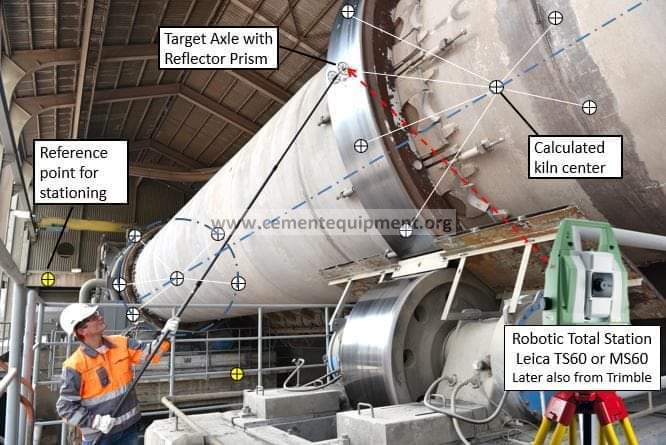Contents
Cement Kiln Alignment
[wpecpp name=”Buy book and resources package” price=”249.69″ align=”center”]

Introduction
Cement kilns are critical components in the production of cement, and they play a significant role in the quality of the final product. However, the alignment of the kiln is crucial for its proper functioning and longevity. Cement kiln hot alignment is a process that ensures that the kiln is aligned correctly to prevent damage to the components and ensure that the kiln operates efficiently. This essay will provide a detailed explanation of cement kiln hot alignment, its importance, and the steps involved in the process.
Overview of Cement Kiln Hot Alignment
Cement kiln hot alignment refers to the process of aligning the kiln when it is operating at its maximum temperature. The alignment process involves adjusting the position of the kiln’s components to ensure that they are correctly aligned to prevent premature wear and tear and ensure that the kiln operates efficiently. The process is necessary because the kiln’s operating conditions, high temperatures, and continuous operation can cause the components to shift and become misaligned, leading to problems such as uneven wear, reduced production, and increased maintenance costs.
The Importance of Cement Kiln Hot Alignment
Cement kiln hot alignment is essential because it helps to ensure that the kiln operates efficiently, resulting in increased productivity and reduced maintenance costs. The alignment process can help to prevent problems such as excessive vibration, uneven wear, and reduced production, which can occur when the components of the kiln are misaligned. By ensuring that the kiln is aligned correctly, the operator can reduce the risk of costly downtime and minimize the risk of catastrophic failure.
Steps Involved in Cement Kiln Hot Alignment
The cement kiln hot alignment process involves several steps that are crucial for ensuring that the kiln operates efficiently. The following are the steps involved in the alignment process:
Step 1: Pre-Alignment Checks
The first step in the cement kiln hot alignment process is to perform pre-alignment checks. These checks involve measuring the temperature of the kiln and ensuring that the support rollers are in good condition. The operator should also check the gear and pinion for wear and ensure that the kiln shell is not warped or bent.
Step 2: Establishing a Reference Line
The next step is to establish a reference line. The reference line is a line that runs through the center of the kiln and is used as a guide for aligning the kiln’s components. The reference line is usually established using a laser or a theodolite.
Step 3: Measuring the Components
Once the reference line has been established, the operator will need to measure the kiln’s components. This involves measuring the support rollers, the gear and pinion, and the kiln shell. The measurements are used to determine the current alignment of the kiln and identify any misalignments.
Step 4: Adjusting the Components
Once the misalignments have been identified, the operator will need to adjust the kiln’s components to ensure that they are correctly aligned. This involves adjusting the support rollers, the gear and pinion, and the kiln shell. The operator may need to use shims or other tools to make the necessary adjustments.
Step 5: Verifying the Alignment
After the adjustments have been made, the operator will need to verify the alignment of the kiln. This involves measuring the components again to ensure that they are correctly aligned. If the measurements indicate that the alignment is correct, the operator can proceed with operating the kiln. However, if the measurements indicate that the alignment is still off, the operator may need to make additional adjustments.
Conclusion
In conclusion, cement kiln hot alignment is a critical process that helps to ensure that the kiln operates efficiently and reduces the risk of premature wear and tear.